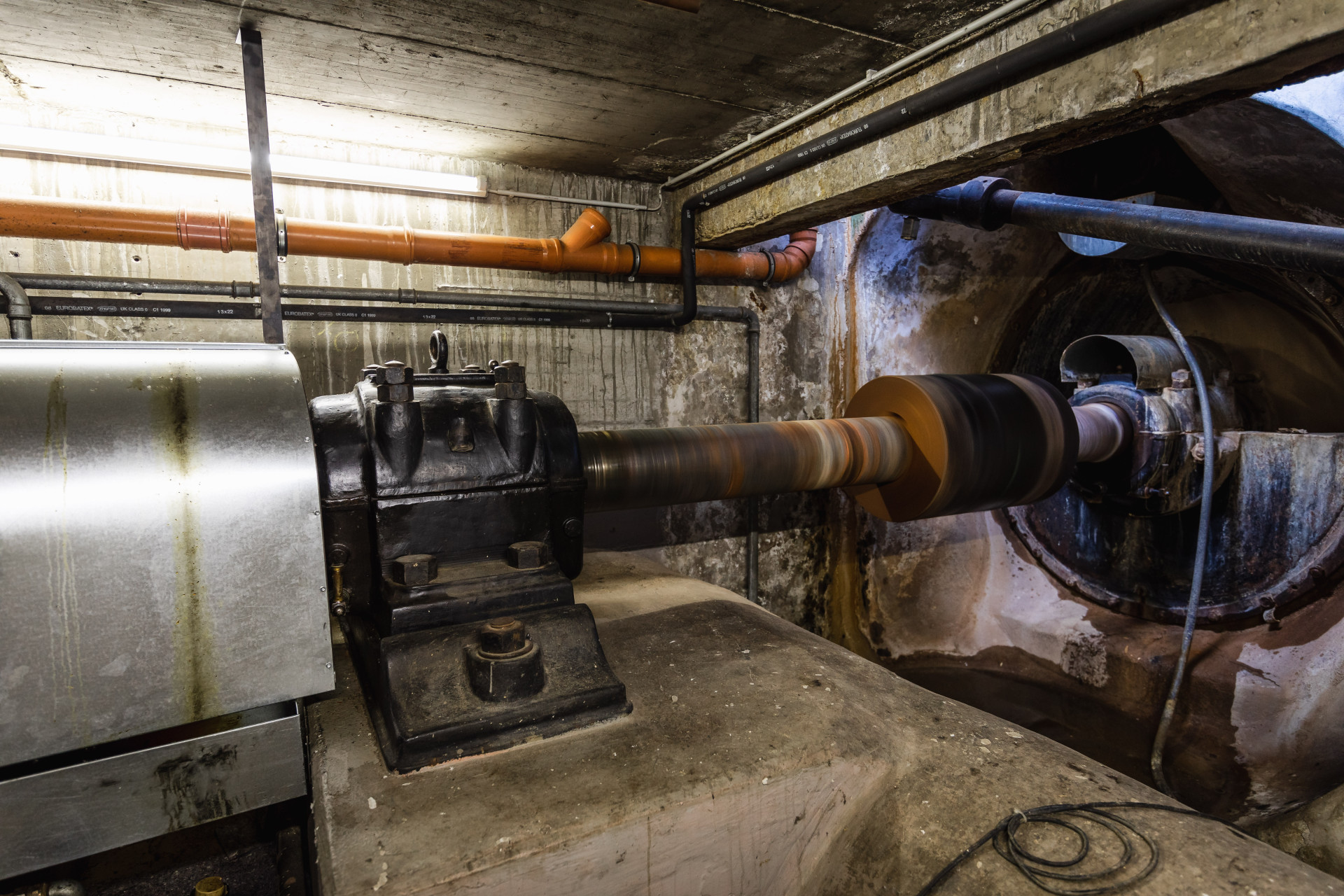
13
Power plant at the Fabrikkanal
The power plant was put into operation in 1885 by the Göggingen doubling mill and yarn factory. The Fabrikkanal fed by the Wertach river was created specifically for this purpose. In 1907 new turbines were installed; the plant is still in operation today.
Building history and description
- Hydroelectric power plant in operation until today, at the factory channel on the site of Amann & Söhne GmbH & Co. KG
- Augsburg, district Göggingen; Fabrikstraße 11
- Construction of the Fabrikkanal 1883
- Construction of the power plant 1885
- Installation of a generator and several turbines of the Voith 1907 family
- Replacement of the two Francis turbines with two Kaplan turbines and installation of two new generators in 2022
- Destruction of the weir by flooding and construction of a new intake structure in 1999
- direct spatial and temporal proximity to the power plant at the Singold (also power plant of the ZNFG)
- single-storey solid construction with pitched roof over rectangular ground plan
- plastered façade with round arched windows with decorated cast iron sprouts
- Etched ornamental glazing in the windows
- Inlets and outlets are characterized by two round arch openings in the base
- Empty shot on the west side of the building
- Establishment of the factory channel 1884 was made to supply the twisting and sewing thread factory Göggingen (ZNFG)
Use and purpose
- Hydroelectric power station of the twisting and sewing thread factory Göggingen (ZNFG)
- from 1957 merger with Zwirnerei Ackermann
- 1994 Acquisition by Amann & Söhne, yarn production at the site until today
- 1880 m long factory channel leads 28.50 cubic meters of water per second to the north
- Transmission of power via transmission belts to the looms
- Technical Equipment:
- Sheaves of the transmission drive in the adjacent boiler house
- two Kaplan turbines from 2022
- two generator from 2022
- Power plant as an object of the UNESCO world heritage stands for:
-
Further development from small-scale to industrial scale
-
Further development from a simple waterwheel to a highly effective turbine
-
early replacement of mechanical transfers of hydroelectric power in the region by electrification
-
Early replacement of local hydropower and electricity generation by decentralized run-of-river power plants
-
Use of renewable energies benefits the environment
-
"Augsburg tradition" of sustainability as a global role model
-
Authenticity and unique features
- Technology was renewed in 1907 and 2022
- Historic weir destroyed in 1999
- 2006 establishment of the Ackermann-weir (Schlauchwehr)
- Energy generation is fed into the public grid today
- Power station as an industrial archeological monument of the suburban area
- After the merger of ZNFG with the twisting mill Ackermann in 1957, it became part of the largest sewing thread manufacturer in Europe
- Providing technical development to a well-preserved, exemplary hydroelectric power plant



